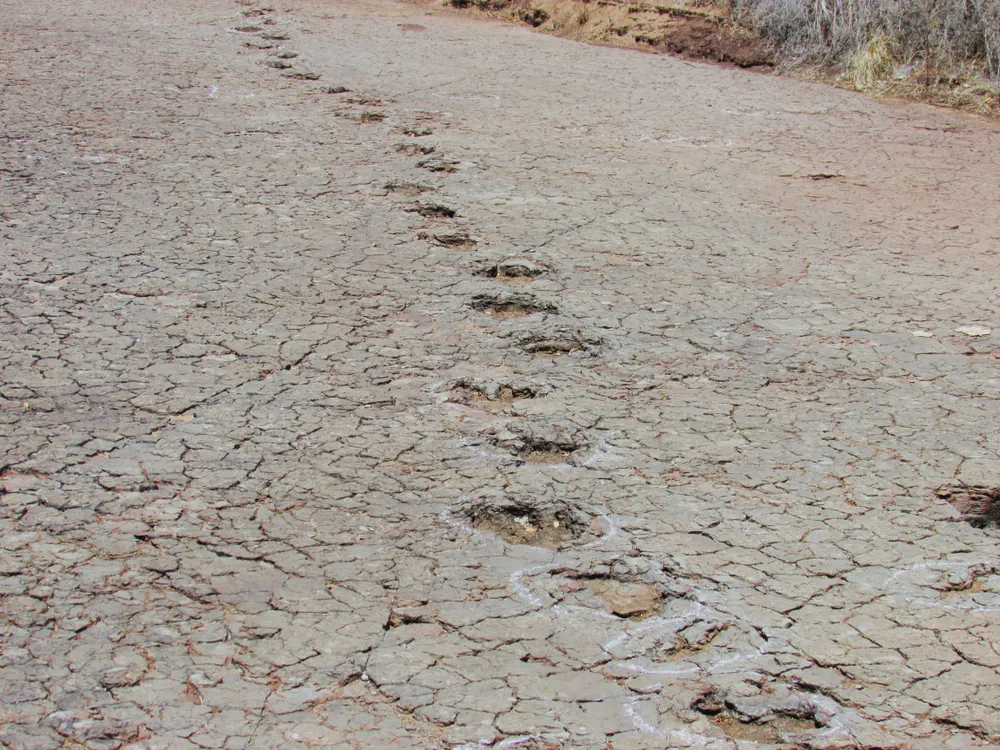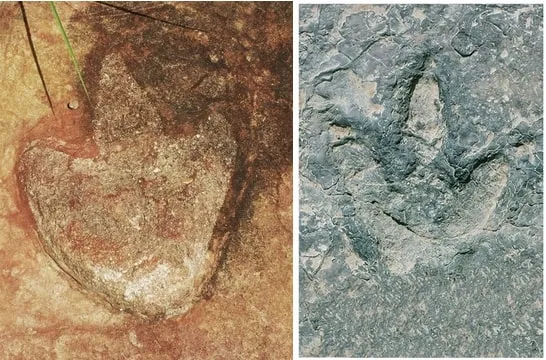‘Matching’ Dinosaur Footprints Discovered in Africa and South America
The fossils show how dinosaurs may have crossed between landmasses around 120 million years ago, when the continents were still connected

Today, Brazil and Cameroon are separated by thousands of miles of the Atlantic Ocean. But for millions of years, the two countries were part of a single supercontinent, called Gondwana.
Scientists have now examined more than 260 similar dinosaur footprints in both Cameroon and Brazil that date to 120 million years ago, demonstrating how dinosaurs could have crossed between what are now Africa and South America. Parts of these countries’ modern coastlines were once linked by a narrow stretch of ground as the continents split apart.
“There was just a neck of land connecting the two, and that neck of land is the corridor that we’re talking about,” Louis Jacobs, a vertebrate paleontologist at Southern Methodist University (SMU), tells NPR’s Joe Hernandez.
The sites where the fossils are preserved now are 3,700 miles distant, but they were once only 600 miles apart, according to the new study led by Jacobs and published by the New Mexico Museum of Natural History and Science this week.
“We determined that in terms of age, these footprints were similar,” Jacobs says in a statement from SMU. “In their geological and plate tectonic contexts, they were also similar. In terms of their shapes, they are almost identical.”

Researchers identified the tracks in the Borborema region of northeastern Brazil and in the Koum Basin in northern Cameroon. The “matching” sets of prints date to the Early Cretaceous, per the statement.
“While the presence of these types of fossils in this location is not surprising, the fact that they have been preserved at all remains extraordinary,” Emese Bordy, a sedimentologist at the University of Cape Town in South Africa who did not contribute to the findings, writes in an email to the New York Times’ Alexandra E. Petri.
Scientists already knew that South America and Africa were once connected—in 1912, the German meteorologist Alfred Wegener proposed that all the world’s continents had formerly been linked in a massive supercontinent called Pangea. The Southern Hemisphere’s continents formed the southern part of that landmass, known as Gondwana. Even at that time, geologists and statesmen had already noted some clues to that history, such as the way that South America’s and Africa’s coastlines seem to fit together like puzzle pieces.
When the two continents started to drift apart roughly 140 million years ago, it allowed magma to rise from the mantle and form oceanic crust. Eventually, the South Atlantic Ocean filled the space between them.
The researchers found dinosaur tracks, fossilized pollen and sediments from ancient lakes and rivers in basins formed by the split, writes CNN’s Ashley Strickland. By around 120 million years ago, the area’s environment would have been akin to a modern tropical rainforest, and it would have drawn dinosaurs to its plentiful vegetation.
The footprints, left behind in mud and silt along the ancient bodies of water, were mostly made by three-toed theropods, carnivorous dinosaurs that walked on two feet. A few were probably also made by sauropods (large, four-legged herbivores with long necks and tails) or ornithischians (dinosaurs closely related to birds).
It’s difficult for scientists to determine which species of dinosaurs walked between the continents. “If your dog and a coyote walk across the same mudflat, you might know that two dog critters walked there, that they are very similar, but you may not be able to know if they are different species,” Jacobs tells CNN. “Ditto the dinosaur track situation.”
But the prehistoric footprints provide other insights.
“Dinosaur tracks tell you things bones won’t,” Jacobs adds to the New York Times. “It shows how they moved, where they moved, whether they moved alone or with others. It’s a different way of looking at the past, because there is different information contained in the footprints.”

